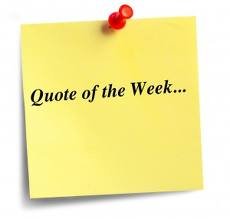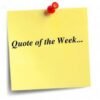Lean Quote: Closing the Knowing–Doing Gap
- Lean Quote
- October 17, 2025

On Fridays I will post a Lean related Quote. Throughout our lifetimes many people touch our lives and leave us with words of wisdom. These can both be a source of new learning and also a point to pause and reflect upon lessons we have learned. Within Lean active learning is an important aspect on
READ MORE
Today’s guest on the meet-up guest is John Hunter. I’ve known John since I started my own blog. He connected with me in my infancy. My concept for the round-up came from John’s management improvement carnivals. John Hunter has experience in management improvement (customer focused continuous improvement, process improvement, systems thinking) and related areas. Since
READ MOREFMEA is a systematic analysis of potential failure modes aimed at preventing failures. This is intended to be a preventative action process carried out before implementing new or changes in products or processes. An effective FMEA identifies corrective actions required to prevent failures from reaching the customer and to assure the highest possible yield, quality
READ MORE
On Fridays I will post a Lean related Quote. Throughout our lifetimes many people touch our lives and leave us with words of wisdom. These can both be a source of new learning and also a point to pause and reflect upon lessons we have learned. Within Lean active learning is an important aspect on
READ MORE
Thanksgiving Friends Thanksgiving is a time For reviewing what we treasure, The people we hold dear, Who give us so much pleasure. Without you as my friend, Life would be a bore; Having you in my life Is what I’m thankful for. By Joanna Fuchs www.poemsource.com I would be remiss if I did not take time
READ MORE
What’s the point of the morning meeting? Paul Akers says it is about building a team. You can not build a team when the leader is talking. The leader must ask employees questions so they talk. When employees talk you are building a team. What do you ask? Ask them “what bugs you?” Problems are
READ MORE


